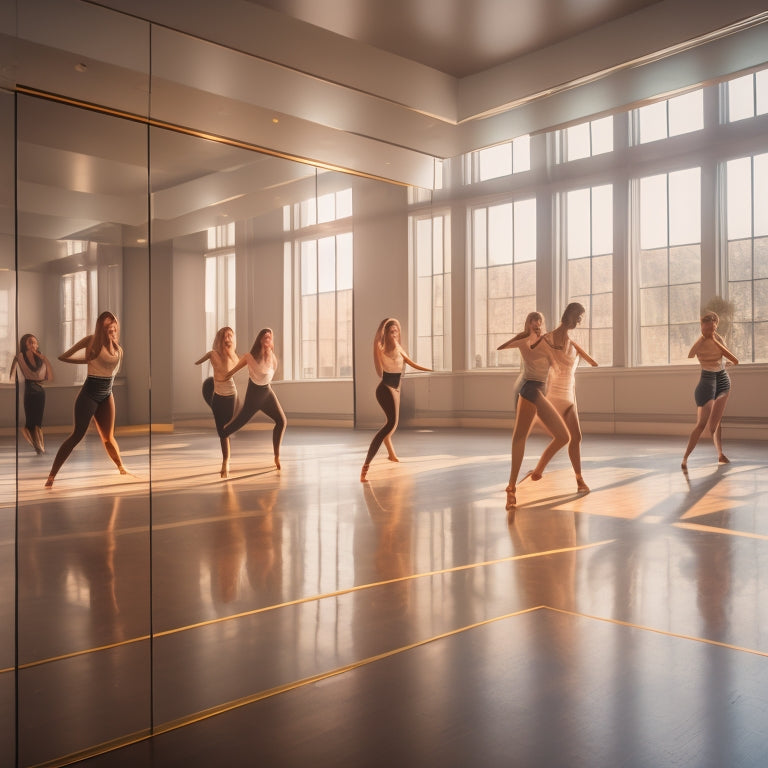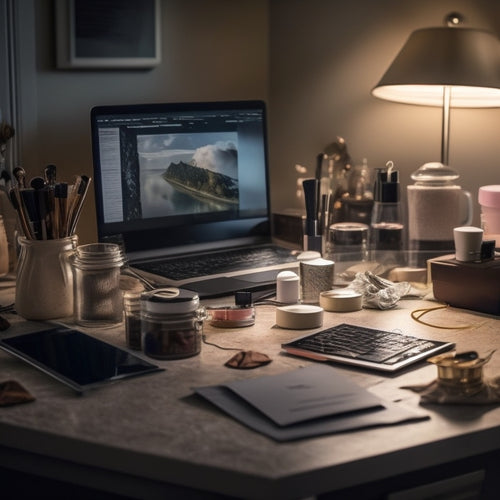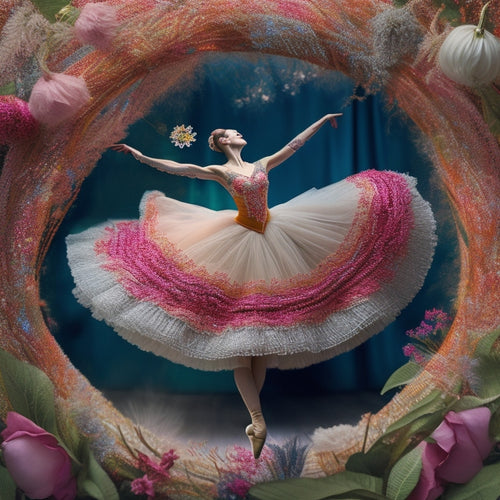
Mirrors Transform Dance Studio Dynamics
Share
Mirrors have become a transformative component of dance studios, providing dancers with immediate visual feedback that refines technique, promotes proper body alignment, and enhances spatial awareness. By fostering a culture of precision and refinement, mirrors enable dancers to make real-time adjustments, synchronize movements, and aim for technical perfection. Ultimately, mirrors facilitate the pursuit of ideal form, aesthetic integrity, and polished performance. As we explore the intersection of mirrors and dance studio dynamics further, the nuances of this relationship come into sharper focus, revealing the full potential of this synergistic partnership.
Key Takeaways
• Mirrors in dance studios provide immediate visual feedback, refining technique, enhancing spatial awareness, and correcting body alignment for precision and perfection.
• Real-time visual feedback from mirrors cultivates a culture of precision, fine-tunes technique, and enhances movement evaluation for synchronized practice.
• Mirrors are vital for dance precision, maintaining aesthetic and technical integrity, and facilitating performance enhancement through targeted feedback and refined movements.
• By enhancing self-awareness, mirrors support confidence building, spatial awareness adjustments, and movement refinement, leading to stronger spatial coordination.
• Mirrors ensure ideal form, elevate performance quality, facilitate synchronization, and help dancers reach their full potential with targeted guidance for performance perfection.
Mirrors in Dance Education
In dance education, mirrors have become an indispensable tool, providing students with immediate visual feedback that fosters self-correction, refinement of technique, and heightened spatial awareness.
Through mirrors, dancers can correct their body alignment, ensuring proper posture, and adjust their movements to achieve peak technique. This visual feedback enables dancers to refine their movements, making adjustments in real-time to perfect their craft.
Enhancing Dance Practice Dynamics
By leveraging the real-time visual feedback provided by mirrors, dance studios can cultivate a culture of precision and refinement. This environment allows dancers to fine-tune their technique and instructors to provide targeted guidance, ultimately elevating the overall quality of dance practice.
Mirrors facilitate movement evaluation, enabling dancers to assess their spatial awareness and make adjustments accordingly. This enhances confidence building, as dancers can refine their movements and develop a stronger sense of self-awareness.
Moreover, mirrors facilitate synchronization practice, allowing dancers to perfect their timing and coordination. By incorporating mirrors into dance practice, studios can create a more precise, refined, and cohesive dance environment. This setting enables dancers to thrive and reach their full potential.
Perfecting Technique and Performance
Precision in technique and performance is vital in dance, as even slight deviations from ideal form can compromise the aesthetic and technical integrity of a piece. Mirrors play an essential role in perfecting technique and performance by facilitating technique evaluation and performance enhancement.
Through mirrors, dancers can refine their movements, adjust their alignment, and correct minor flaws, ensuring a polished performance. Additionally, mirrors enable instructors to provide targeted feedback, helping dancers identify areas for improvement.
Frequently Asked Questions
Can Mirrors in the Dance Studio Promote a Sense of Competition Among Students?
"A sea of mirrors can create a tidal wave of self-comparison, potentially fostering a sense of competition among students as they scrutinize their body awareness, but a mindful instructor can mitigate this effect by emphasizing individual growth over comparison."
How Often Should Mirrors Be Cleaned to Maintain a Safe Dance Environment?
Regular glass maintenance is essential to maintain a safe dance environment, ensuring reflective hygiene. Clean mirrors daily with a gentle glass cleaner and lint-free cloth to prevent streaks and scratches, promoting a hygienic and distraction-free dance space.
Are There Any Specific Mirror Installation Requirements for Dance Studios?
When installing mirrors in dance studios, consider Studio Reflection and Corner Placement to guarantee maximum visibility and safety. Install mirrors at a 45-degree angle in corners to minimize blind spots, and position them 5-6 feet off the floor to facilitate unobstructed views.
Can Mirrors Be Used in Dance Therapy or Adaptive Dance Classes?
Like a reflection of the soul, dance therapy and adaptive dance classes can harness the power of mirrors to foster body awareness, emotional expression, and self-discovery, empowering individuals to access their full potential and find freedom in movement.
Do Mirrors Have Any Impact on the Acoustics of a Dance Studio?
Mirrors in dance studios can affect acoustics by increasing sound reflection, potentially causing echo and reverberation. However, strategically placing mirrors and incorporating echo reduction materials can mitigate these effects, optimizing the studio's sonic environment.
Related Posts
-

What's Holding Back Your Online Dance Makeup Empire?
You've poured your heart into building your online dance makeup empire, but it's stuck in neutral. What's holding you...
-

7 Comfortable Dance Shoes to Keep You Moving
When you're searching for comfortable dance shoes, look for options that offer support, cushioning, and flexibility. ...
-

Dance Into Creativity With Ballerina Embroidery Pattern
Ignite your creative potential with the enchanting ballerina embroidery pattern, where artistry meets precision. This...


